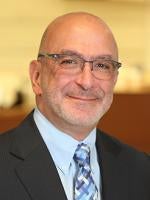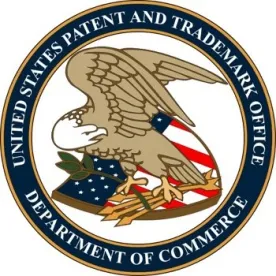In post-patent issuance proceedings before the US Patent and Trademark Office (USPTO) – inter partes review (IPR), covered business method (CBM), and post-grant review (PGR) – parties almost invariably submit expert testimony. Depending on the type of post-issuance proceeding, the testimony can relate to prior art, claim construction, patent-eligibility, or formal requirements for patentability including adequacy of written description, enablement, and definiteness.
In contrast, patent applicants almost never submit expert testimony to the USPTO prior to issuance of the patent. The great majority of the time, such testimony is unnecessary. Patent attorneys representing clients before the USPTO have at their disposal patent specifications and drawings on which to rely for support for arguments to the USPTO Examiner. If the patent examiner applies prior art against the claims of the pending application, an attorney can point to contrary statements or holes in the prior art, and argue for patentability over the prior art based on those contradictions and/or omissions. The attorney also can point to contradictions, omissions, and/or logical leaps in the patent examiner’s reasoning or analysis.
But this is not always enough. Sometimes the patent examiner just does not credit attorney argument appropriately. Prosecution can be prolonged and patent applications may be abandoned as a result of the attorney’s inability to convince the patent examiner based on the four corners of the patent document and the prior art. For example:
- The patent examiner may not interpret a patent claim term correctly because the patent specification provides conflicting or different definitions of the term, or no definition at all.
- The patent examiner may not understand language in the prior art properly because of differences or changes in usage of terms in the field.
- The patent examiner may not understand how the invention works, or more particularly, how someone of working skill in the technical field could implement the invention based on the description in the patent specification and drawings.
- There may be evidence of non-obviousness, such as commercial success of products or services embodying the invention, a long-felt need for the invention, or failure of others to develop the invention. Some of the evidence may be factually based, but needs to be tied to the point(s) of novelty of the invention.
What can an attorney do? There is the appeal process: putting the disagreement before the Patent Trial and Appeal Board (PTAB), a tribunal within the USPTO, for reconsideration by other technically skilled decision-makers. There are then further avenues of appeal – the Court of Appeals for the Federal Circuit, and even the US Supreme Court. But such appeals are progressively more expensive and, in the absence of substantial points that the patent examiner and the PTAB missed, the chances of success are usually low. As a result, a company often performs triage on its problematic patent applications, appealing some and abandoning others.
There is also an alternative. While the application is pending, a declaration of a technical expert, with strong credentials in the relevant technological area, could tip the scales in favor of patentability. So long as expert testimony does not bear on the ultimate legal conclusion at issue (e.g. obviousness, enablement) and even if the testimony is opinion testimony, it is entitled to weight, as provided by Manual of Patent Examining Procedure (MPEP) § 716.01(c). The MPEP discusses the submission of expert declarations in several areas:
- MPEP § 716 (Affidavits or Declarations Traversing Rejections) generally discusses types and content of expert testimony, and how a patent examiner should treat that testimony.
MPEP § 1504.03 (Nonobviousness) refers to the use of expert testimony to rebut a prima facie case of obviousness. - MPEP § 2107 (Guidelines for Examination of Applications for Compliance with the Utility Requirement) refers to the use of expert testimony to establish usefulness, or utility, of an invention, and how a patent examiner should treat that testimony.
- MPEP § 2107.03 (Special Considerations for Asserted Therapeutic or Pharmacological Utilities) refers to the use of expert testimony to evaluate effectiveness of therapeutics and reasonable expectation of success.
- MPEP § 2145 (Consideration of Applicant’s Rebuttal Arguments) refers to expert testimony about the level of skill in the art, among other things.
- MPEP § 2164.05(a) (Specification Must Be Enabling as of the Filing Date) also refers to the use of expert testimony about level of skill in the art, in the context of enablement under 35 U.S.C. § 112.
Providing expert testimony during prosecution does not always convince an Examiner to allow the pending patent claims. Appeal still may be necessary. But even so, the expert testimony makes the record more complete, and can contribute to success on appeal.
The submission of expert testimony in a pending patent application also can be helpful after the patent issues, for example, if a patent challenger tries to invalidate the patent. If the expert testimony already in the patent prosecution file bears on the same or a similar issue, and addresses the same or similar facts that a patent challenger tries to rely on in a post-issuance proceeding, a patent owner can use that expert testimony to prevent the patent challenger from meeting the burden of showing likelihood of success if a post-issuance proceeding were instituted.
It is better to have such expert testimony be part of the file history than to submit it after a petition is filed. In deciding whether to institute a post-grant proceeding, the PTAB must take into account a patent owner’s preliminary response to the petition including any “testimonial evidence, usually expert testimony, that the patent owner presents. In this situation, the PTAB must view any factual disputes that the testimony raises in the light most favorable to the petitioner, not to the patent owner. 37 CFR § 42.108(c). However, having expert testimony already part of the file while the patent application was pending makes that testimony part of the record. The patent owner is entitled to rely on the record – including expert testimony submitted during prosecution – to oppose institution of a post-issuance proceeding.
Using expert testimony in a pending patent application does raise a concern that, in the event that the patent gets litigated, defense counsel can use the expert’s statements to the patent owner’s disadvantage. For example, litigation counsel could identify adverse admissions about either the scope of the patent disclosure, or the interpretation of the prior art, or the meaning of a particular claim term, or statements about enablement. For an issued patent, the concern is legitimate. However, if the patent never issues, then the concern is moot.
Expert testimony is not a tool of first resort in pending patent applications. It can, however, be an important tool for addressing rejections in important patent applications and, once part of the record, may help in post-issuance situations as well.




 />i
/>i

